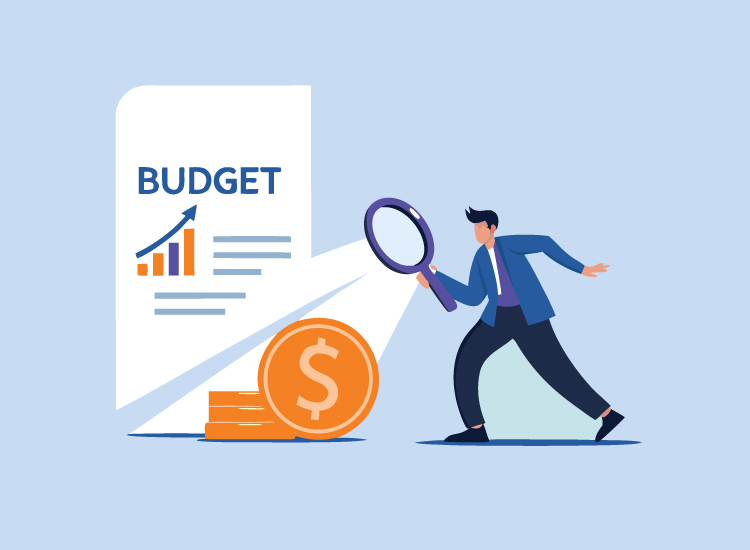According to a 2023 survey of more than 2,000 U.S. employers, the No. 1 downside of remote work is the inability to monitor and observe employees. Organizations that once relied on desk visits and peer monitoring have been struggling since 2020 to figure out how to measure performance and keep employees on track while they’re offsite.
To help with this, nearly 80% of employers use employee monitoring software to observe (and sometimes record) when employees log on and off, how long they spend idle during the day, real-time browsing activity, and more. However, research shows that monitoring employees can cause them to deviate further from expected standards. This is because they may feel less motivated to be productive due to distrust by leaders (e.g., along the lines of George Orwell’s “Nineteen Eighty-Four.”
However, there are project management tools that offer the best of both worlds. Here’s how your organization can effectively track productivity without micromanaging via “surveillance-based” tools.
What Is Micro-Information?
In a business setting, micro-information refers to datasets that can help your organization track metrics and use business analytics to make informed decisions. Examples of micro-information include:
- Real-time program, project, and task progress
- Employee productivity and focus levels
- Resource allocation and utilization
- Employee time tracking and attendance
- Time spent in meetings across the organization
Micro-information gathered by project management tools included in workforce management software can help you accurately track this data and more – without
showcasing a lack of trust through surveillance-based tools, including mouse clicks, websites visited, screen capture, etc. This makes it easier to measure your organization’s overall efficiencies and bottlenecks to improve business processes and to better understand both progress and challenges.
How Advanced Project Management Tools Can Help
Project management tools (which also encompass program and task management) and workforce management software offer many benefits for measuring performance whether working remotely, hybrid, or onsite. Here are a few ways to use these platforms to become a more strategic leader and to better allow staff/teams to showcase their work
Clearer Expectations
Project management software is designed to capture micro-information such as who is responsible for each assignment, project/program /task timelines, steps completed, and more. This information is not only available to employers—it’s also employee-facing.
Having this information spelled out in a central location makes it easier for employees/teams to understand what’s expected of them. This keeps everyone on the same page to ensure continued progress.
Real-Time Project Tracking
Workforce management software can provide project updates in real time. This means anyone within the organization can see who is working on what at any given time and whether project deliverables are on track. If a project milestone or deadline is at risk or missed, an alert is created to notify your leadership team and the responsible employee that something is at risk or overdue.
Increased Accountability
While project management tools still track employee activity, they do so in a way that empowers employees instead of making them feel undervalued. Due to increased transparency and the ability for everyone to see each employee’s assignments, employees are empowered to take accountability and ownership of their projects to demonstrate their best work to leadership.
This helps encourage employees and teams to take a more significant stake in the company and its future. A sense of ownership can also drive greater motivation, performance, and loyalty.
A More Even Playing Field
Power differentials can divide teams based on their perceived level of authority. With workforce management software, transparency transcends both ways. Not only can an executive leader see employees’ progress – but employees can also see what executive leaders are doing. This helps to create better leader-staff alignment and a more level playing field.
Work-Life Balance Measurements
While many organizational leaders worry employees aren’t being as productive at home, there are employees on the opposite end of the spectrum who find it harder to log off. Burnout is real, and it can devastate a company through diminished employee retention.
Project management tools can use gathered micro-information to identify a work-life balance percentage for each employee. This helps leaders identify who’s at risk of burnout so work can be more evenly distributed.
Remote, Hybrid, and OnsiteWorkforce Empowerment
Working remotely, hybrid, and onsite is more accessible for some people than others. Your employees may need a greater sense of connectedness and collaboration. Workforce management tools like coAmplifi come packaged with communication tools designed to create a healthy blended remote, hybrid, onsite culture.
Some programs that can help empower remote and hybrid employees to continue getting to know their colleagues include a virtual campus, instant messaging, employee social networks, and message boards for shared meeting notes and agendas.
Strengthen Your Business Decisions With the Right Tools
It’s possible to achieve the same or even greater productivity levels without burdening your remote employees. It just takes implementing the right tools.
coAmplifi’s project management tools make it easy to stay on top of all aspects of your organization no matter where your people work. Experience the benefits of micro-information for yourself. Schedule your demo now!




